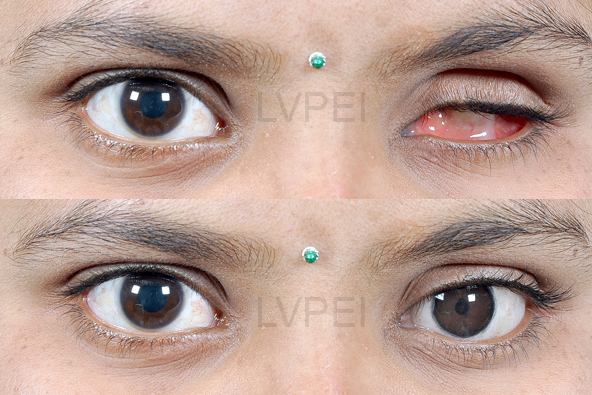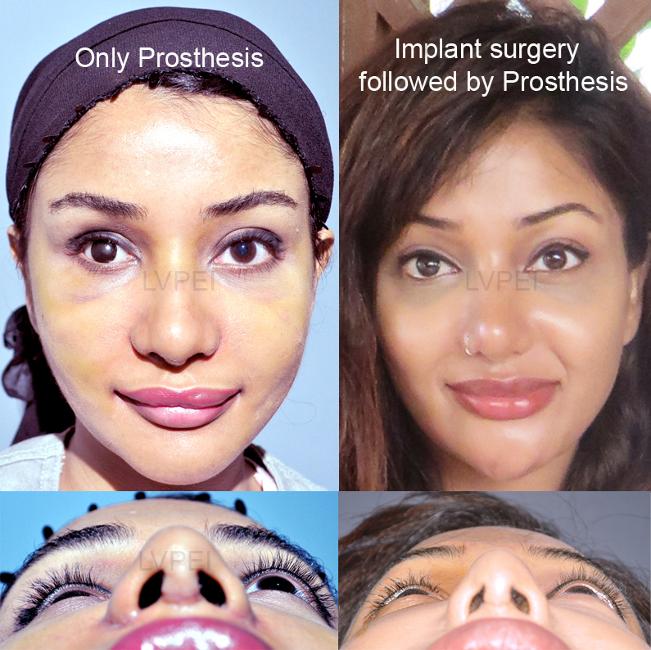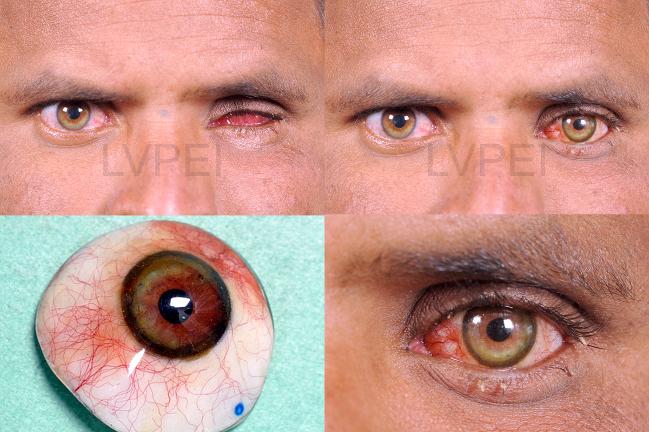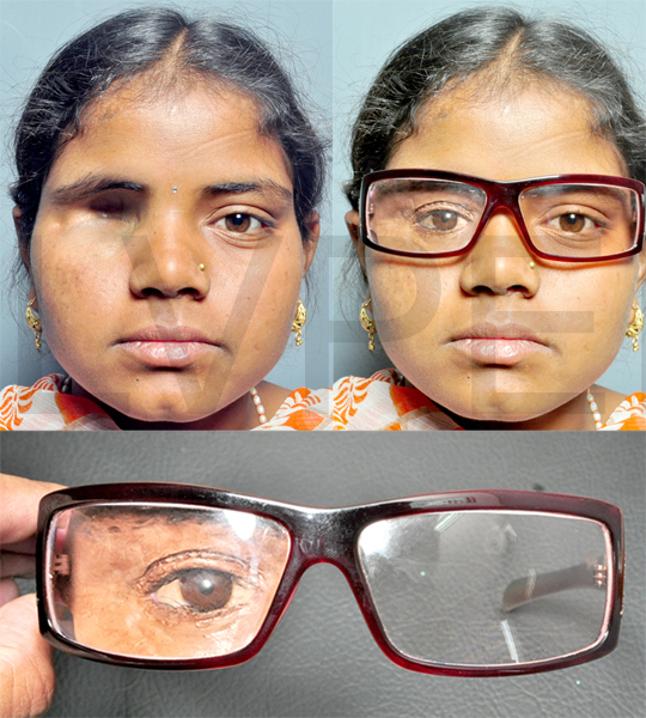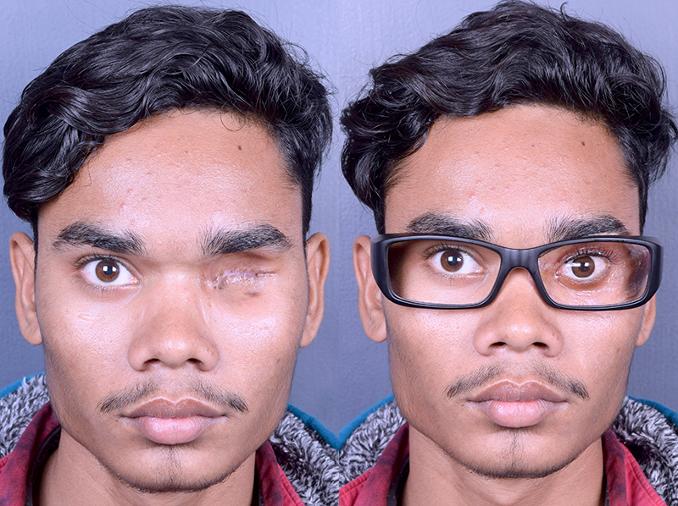
Introduction

A non-functioning or disfigured eyeball can affect appearance and self confidence. In such situations, although improving vision is not possible in current day science, an artificial eye can improve cosmetic appearance. Here is some useful information for you in this regard.
What causes Disfigured eye? A disfigured blind eye can occur due to various reasons. It can be due to severe injury, or failed operations performed for severe cornea/retinal disorders. Such an eye with no visual potential can look red, shrunken, and even cosmetically poor. Moreover, some patients can have repeated episodes of swelling and pain within this blind eye.
Treatment for disfigured eye  Although vision is lost, the appearance can be improved with an artificial eye. This can either be done directly (without surgery) or following an orbital ball-implant surgery.
Although vision is lost, the appearance can be improved with an artificial eye. This can either be done directly (without surgery) or following an orbital ball-implant surgery.
1) Direct dispensing of artificial eye: Directly placing an artificial eye is possible in totally shrunken eyeballs. It avoids surgery, and gives modest cosmetic benefit. However, not every patient is well suited for this short-cut approach.
2) Ball implant surgery followed by artificial eye: Many patients have a painful blind eye, and its removal is mandatory before an artificial eye can be fitted. Evisceration surgery involves removal of the damaged part of the eye which is replaced with a ball implant. This approach gives the best possible cosmetic appearance, but requires a 2 month wait period following surgery before a final artificial eye can be dispensed. Which option is best suited for you can only be decided by an actual check-up.
Preparation for your surgery During your consultation, we examine vision, and overall eyeball status. If there is any change of vision, a respective specialist is consulted, and you will be guided accordingly. If the eye was blinded due to injury, we look for surrounding injuries like fractures (by performing a CT scan) which may require additional treatment. If we decide to directly go ahead with artificial eye surgery is avoided. If we decide to go ahead with the ball-implant surgery, we perform a few blood tests required for anesthesia fitness. All this can be done in a day or two, prior to surgery.
Cost The extent of surgery (and therefore its cost) is dependent on the actual findings. However, here is a rough range of pricing I can send you the differences between packages in a separate email if you wish. For best cosmetic results, a Deluxe/Exclusive package is advisable. Placement of the artificial eye after 2 months would incur additional costs ranging from 15-45K, based on the type of material chosen.
Follow-up visits This is applicable only if you undergo surgery. Evisceration surgery is not a one-day process. The typical visit schedule is as follows: Pre-Surgery check-up: Monday Surgery day: Tuesday Post-op check-1: Immediate next day of surgery in the morning between 7-8 am. Post-op Check-2: At 2 weeks. Post-op Check-3: At 2 months for artificial eye fitting.
Post-surgery recovery This is applicable only if you undergo surgery. Many prospective patients want to know how soon can they get back to work, or how soon can they look normal? Here is a short outline of the expected recovery: Week 1: Your eyelids will have swelling, bruising, and pain. Pain is moderate to severe for the first 3 days, and tolerable thereafter. There will be watering, but you can perform visual tasks and indoor activities with your other eye. Gym and jogging to be avoided. Week 2: Pain will be gone, and swelling would have reduced by 50%. You can get back to outdoor activities and routine work along with gym or jogging. Week 3-6: You would see swelling only in the morning hours. Week 8: Complete healing, with no swelling. You will be ready to receive the artificial eye.
Fitting the artificial eye  It is also called an ocular prosthesis and is custom-made for you. Making of the artificial eye is not a surgery, and is not painful. First measurements are taken, and then painting is done by an artist. The process may take 1-2 days. Once the artificial eye is ready, you are taught how to insert and remove it, as well as its daily care. The artificial eye needs to be changed every 4-5 years to maintain best health of the socket tissues.
It is also called an ocular prosthesis and is custom-made for you. Making of the artificial eye is not a surgery, and is not painful. First measurements are taken, and then painting is done by an artist. The process may take 1-2 days. Once the artificial eye is ready, you are taught how to insert and remove it, as well as its daily care. The artificial eye needs to be changed every 4-5 years to maintain best health of the socket tissues.
Drawbacks and complications Evisceration surgery rarely has complications, and they could be implant migration or extrusion. These, if happens, can be corrected by an additional procedure. Rarely, the prosthesis may not have a good fit, or the eye tissues may react to it with granuloma formation, which may require a small procedure.
Visiting Hyderabad If you are an out-station patient and need help to plan your visit to Hyderabad, click here.
Appointment For an appointment, please write email to milind@drmilindnaik.com
Before After photos:
